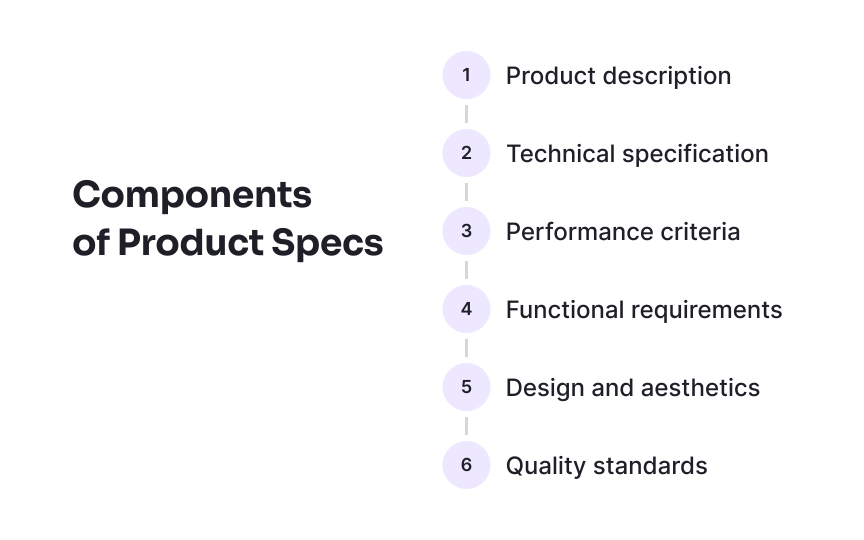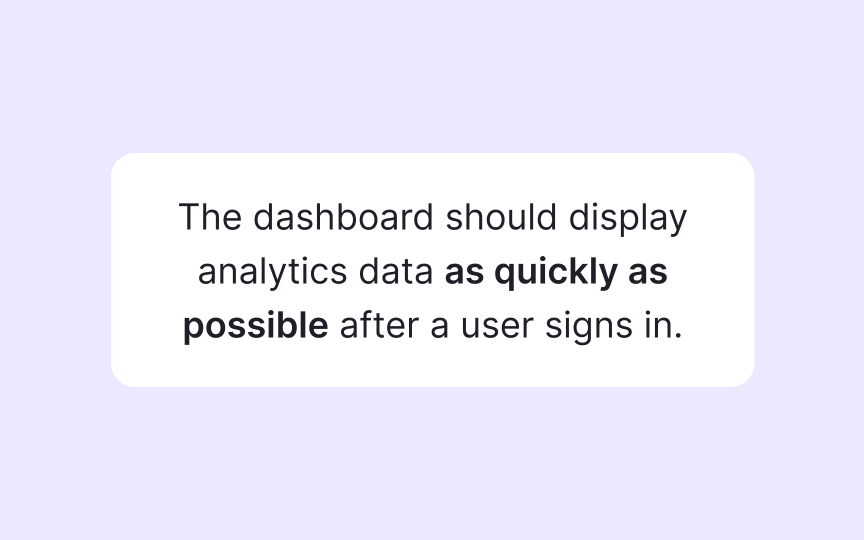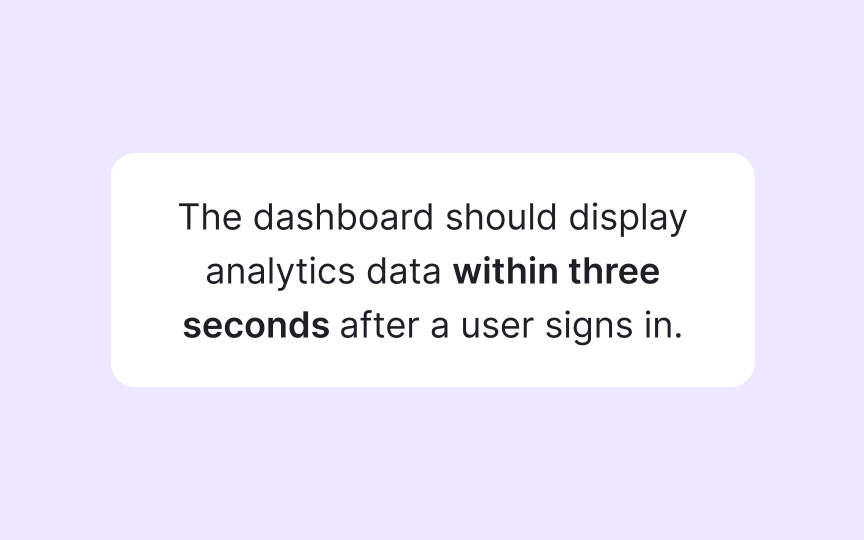Understanding Product Specifications
See how product specifications turn abstract ideas into a shared blueprint that guides development.
Every product, from a smartwatch to a SaaS platform, starts as an idea that must be translated into something real. Product specifications serve as that translation. They describe what the product is, what it must do, and the standards it should meet so that teams can move from concept to creation without confusion.
Specifications guide collaboration and alignment across product, design, engineering, and QA. They act as a single source of truth that defines expectations and prevents misinterpretations throughout the product’s lifecycle. Unlike general planning documents, specifications are concrete and measurable. They describe not only the intended outcome but also the conditions for success.
Examples from both physical and digital products show how specifications adapt to different contexts while serving the same purpose: creating a clear link between user needs, business goals, and implementation details.
A product specification is a detailed document that defines what a product is, what it must do, and how it should perform. It translates the initial idea into clear, measurable requirements that guide all teams involved in development. Unlike vision statements or strategic plans, specifications describe the concrete details that make a product functional, usable, and consistent. They often include requirements, features, materials, and performance criteria that ensure the final result meets both business goals and user expectations.
A strong product specification serves as a blueprint for everyone working on the product. It tells designers how it should look and behave, developers how it should work, and testers what to measure against. Whether applied to digital tools, physical devices, or services, a specification ensures that everyone shares the same understanding of what needs to be built. By aligning intent and execution, it becomes one of the most reliable instruments for turning abstract goals into practical outcomes.
Pro Tip: Always define what the product must do and how it will be measured before discussing why it matters.
A product specification guides development by giving every team a shared direction and clear expectations. It outlines what the product must achieve, which features are essential, and how success will be measured. This structure prevents teams from working in isolation or making decisions that conflict with each other. When designers, engineers, and product managers refer to the same document, their work becomes coordinated and consistent.
In software development, for example, a specification might define that a dashboard must load within two seconds, display key analytics, and support mobile access. These details guide both design and engineering decisions, making it clear what “done” means. In hardware projects, a specification may describe materials, dimensions, and safety standards, ensuring that the product meets performance and compliance requirements before manufacturing begins.
By translating product goals into measurable outcomes, specifications align creative and technical work.
Pro Tip: Include measurable benchmarks in specs so each team knows what success looks like during development.
A strong product specification follows a clear and predictable structure that helps teams stay aligned throughout development. Each section plays a distinct role in describing what the product is and how it should function. The structure can vary depending on the industry or company, but the most effective specifications include these key parts:
- Product summary: Explains what the product is, why it exists, and who it serves.
- Scope: Defines what will be included and excluded from development to prevent unnecessary expansion.
- Functional and technical requirements: Describe how the product should work, which systems it depends on, and any key integrations or technologies.
- Design specifications: Detail the product’s appearance and user experience, from interface layout to materials or visual style.
- Performance criteria: Establish measurable standards, such as response time, durability, or energy efficiency.
- Acceptance criteria and risks: Indicate how success will be measured and identify potential challenges early in the process.[1]
Ambiguity in product specifications often leads to costly rework, missed deadlines, and frustration across teams. When requirements are vague, such as describing a product as “fast,” “modern,” or “user-friendly,” teams may interpret them differently, producing inconsistent results. A clear specification prevents this by replacing assumptions with measurable details. For instance, instead of stating that an app should load quickly, the spec can define a target load time of two seconds on standard mobile networks.
Precise wording and quantifiable metrics leave no room for misinterpretation. This approach helps engineers understand technical expectations, designers grasp usability standards, and testers verify compliance. Clarity at the specification stage reduces back-and-forth discussions later and prevents development from drifting away from intended outcomes.[2]
Pro Tip: Replace subjective words like fast or easy with measurable targets to make expectations unmistakable.
A well-defined specification not only describes what to build but also provides the foundation for testing and verification. Once features, performance goals, and technical requirements are documented, they become measurable references that quality teams can use to confirm whether the product works as intended. For example, if a specification states that a feature must process 500 transactions per minute, testing teams can directly evaluate that claim and report deviations early.
This connection between documentation and testing makes accountability transparent. Each requirement has a clear owner, and every result can be traced back to a documented expectation. In collaborative environments, this traceability reduces disputes and ensures that all changes remain consistent with the original goals. Product specifications, therefore, serve not only as guides for building but also as benchmarks for validating success and maintaining trust across teams.
A product specification connects the goals of users and the objectives of the business within a single framework. It ensures that the product’s features and performance requirements serve both audiences. When user needs are clearly expressed in the specification, such as faster checkout flow or improved accessibility, they guide design and development decisions. At the same time, business priorities like cost
This balance is what makes specifications valuable across disciplines. For example, a spec for a mobile banking app might translate a user need for “secure and simple transfers” into a business requirement for “meeting financial compliance standards while reducing drop-off rates.” By integrating these perspectives early, the specification helps prevent conflicts between
References
- A Guide to Product Specification: Writing Tips + Examples | Miro | https://miro.com/
- Product Specification (Specs) - GeeksforGeeks | GeeksforGeeks




















